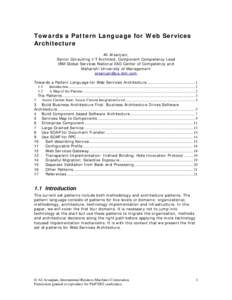 Date: 2004-02-16 17:18:00Enterprise application integration Software architecture Web services Enterprise architecture Service-oriented architecture Component-based software engineering Service Service-oriented modeling Service-oriented architecture implementation framework | |  Towards a Pattern Language for Web Services Architecture Ali Arsanjani, Senior Consulting I/T Architect, Component Competency Lead IBM Global Services National EAD Center of Competency and Maharishi University of Managem Towards a Pattern Language for Web Services Architecture Ali Arsanjani, Senior Consulting I/T Architect, Component Competency Lead IBM Global Services National EAD Center of Competency and Maharishi University of Managem
Add to Reading ListSource URL: www.hillside.netDownload Document from Source Website File Size: 238,21 KBShare Document on Facebook
|

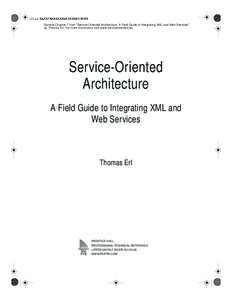
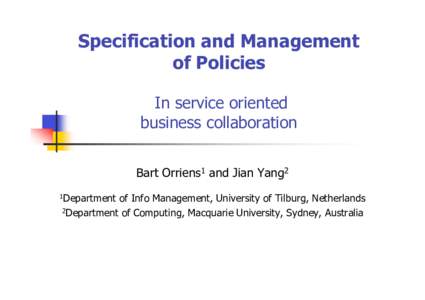
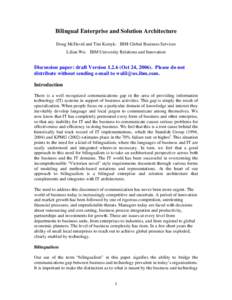
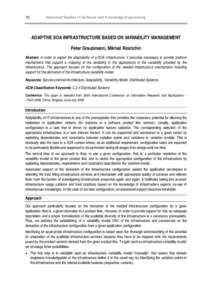
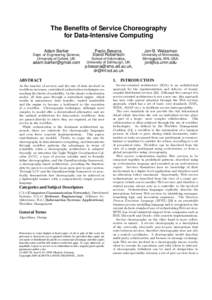
 Towards a Pattern Language for Web Services Architecture Ali Arsanjani, Senior Consulting I/T Architect, Component Competency Lead IBM Global Services National EAD Center of Competency and Maharishi University of Managem
Towards a Pattern Language for Web Services Architecture Ali Arsanjani, Senior Consulting I/T Architect, Component Competency Lead IBM Global Services National EAD Center of Competency and Maharishi University of Managem